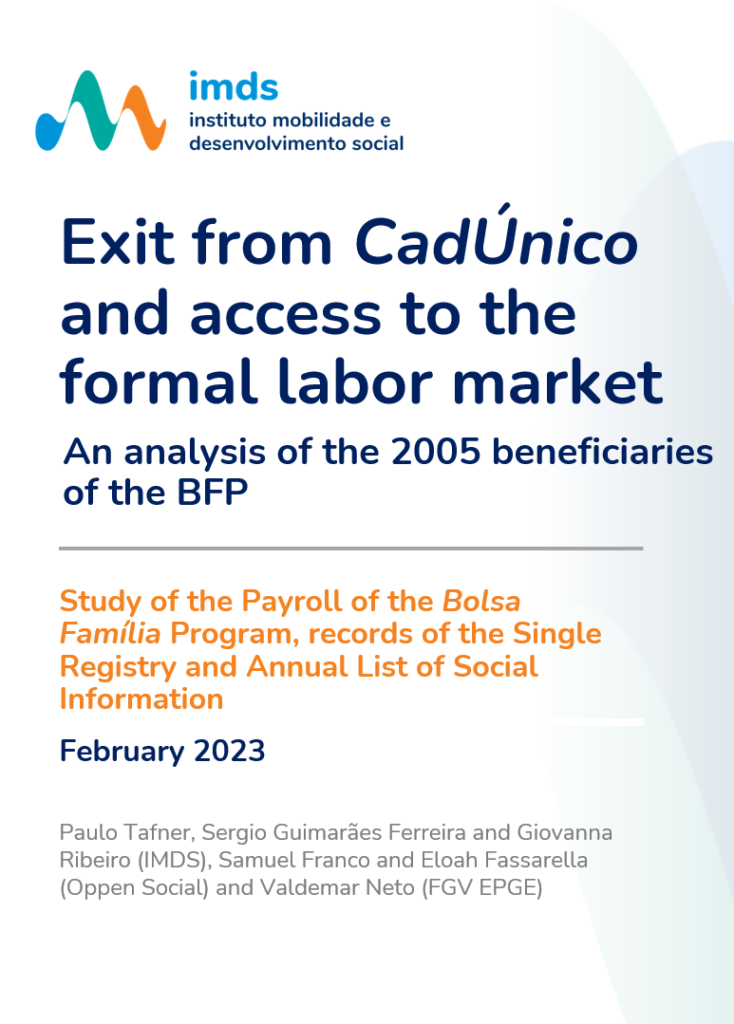Latest
Publications
Exit from CadÚnico and access to the formal labor market
Author: IMDS and Oppen Social in partnership with researcher Valdemar Neto, from FGV EPGE
Edition: 1st
Published in: February 2023
In a new effort to understand the dynamics of poverty in Brazil from longitudinal data, the presentation “Exit from CadÚnico and access to the formal labor market” extends the study of the exit rate of CadÚnico of dependent beneficiaries aged 7 to 16 years of the PBF in 2005 – individuals in poverty and extreme poverty –, also looking at access to the formal labor market.
From the database of the Payroll of the Bolsa Família Program of 2005 (Payroll), we evaluated the exit rate of the beneficiaries of the Single Registry (CadÚnico) in 2019. The study analyzes, based on the probabilities of not remaining in the Single Registry, the exit not only from the Payroll, but also from the CadÚnico, indicating that these individuals have ceased – even temporarily – to meet the requirements established for the CadÚnico (monthly income greater than half a minimum wage per capita and total monthly family income greater than R$ 3 thousand). The study also allows the comparison of the exit rate of the CadÚnico by age, skin color/race and sex, as well as by territorial divisions – municipalities, microregions, states and regions.
In a complementary way, we address a second question: what is the rate of access to the formal labor market of these beneficiaries? The study is based on the comparison of the frequency of formalization (to be found in the Annual Report of Social Information – RAIS) of this generation of dependents from 3 possibilities: not found in RAIS, found in RAIS in up to 2 years and found in RAIS in 3 years or more. This is a way of trying to roughly measure the intensity of this more or less strong bond, according to the number of years in which individuals were found in the formal market. Also in this case, the results are studied by municipalities, microregions, states, regions and by sociodemographic cuts.
In both cases, we also sought to relate variables (from external databases, such as SUS, Census, and INEP) that characterize the territories with more or less high rates of exit from CadÚnico and formalization.
Enjoy the reading!